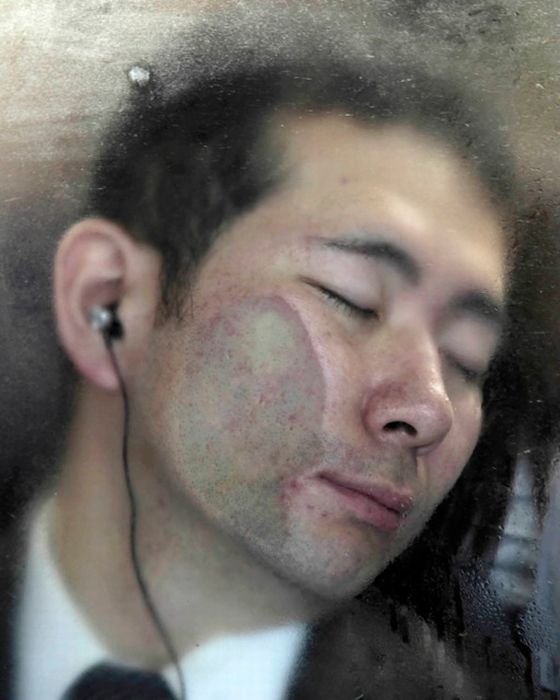|
|
Tokyo Compression By Michael Wolf
|
In Hong Kong Inside Outside, Wolf pairs the architectural abstractions of Architecture of Density, with 100x100, a study of one hundred interiors in one of Hong Kong’s oldest housing complexes. Titling his series 100x100 as each apartment in the complex measures exactly one hundred square feet, Wolf uses a typological approach, adopting the same vantage point for each image, once again evoking the approach of the Bechers and the New Topographics. However, in stark opposition to the distance and formalism of Wolf’s architectural photographs, these images have a quasi-journalistic style. Although the inhabitants of these spaces are present in each image, it is not so much their portraits that are striking as the extraordinarily diverse environments that they have created for themselves in these standardized spaces. Together with Hong Kong Back Door, the series highlights the ingenuity and adaptability of these citizens and their surprising strength within the confines of the city’s concrete shell.
In the series Bastard Chairs, Wolf once again makes use of a basic facet of urban life in Asia, revealing its symbolic power in relation to the life of the city. The chairs photographed in this series have been patched up, reconfigured, often repaired dozens of times. They provide a graphic illustration of China’s thriftiness and its devotion to maximizing productivity. However Wolf’s attraction to these objects is not only driven by their social significance, but also by the unintentional “beauty inherent in used objects.” His images of these chairs, created purely to meet the functional need of sitting, celebrate the intelligence of their design and the beauty of their patina. The owners of these chairs do not appear and yet their presence is palpable in this extraordinary array of customized objects, each chair reflecting some aspect of its owner’s personality.
Wolf once again explores China’s vernacular culture in the series Real Fake Art. In this series, he focuses on the multi-million dollar business that has developed in China for copying major pieces of modern art, from Francis Bacon to Andy Warhol, principally for export to the West. These photographs show ‘copy artists’ holding their ‘fakes,’ which are often indistinguishable from the original. The work deals with the phenomenon of mass production within the increasingly democratized world of modern art, raising questions about the value of art in the age of mass reproduction and, as with The Real Toy Story, evoking the cultural and commercial exchanges between China and the West. Interestingly, it is this latter series that led Wolf to undertake his first series of work outside of Asia.
In 2006, when arriving in Chicago to install The Real Toy Story, Wolf took the elevated train into the city at dusk and was struck by the transparency of its architecture. After having worked in Asia for many years, Wolf saw Chicago as providing the opportunity to continue his study of city life in a radically different context. Shooting from public rooftops over the course of several months, Wolf adopted a similar visual approach to his architectural work in Hong Kong. However, the transparency and monumental size of Chicago’s buildings give a very different result: the city is far less dense than Hong Kong, thereby creating a greater sense of depth to the images, while the transparency of its glass skyscrapers causes the life within them to seep out.
|
|









